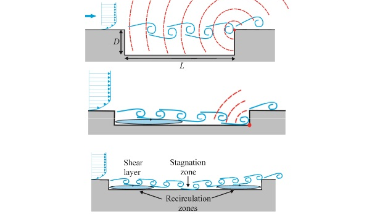Experimental and numerical studies have been carried out to investigate the effect of micro-perforating the base of an open shallow cavity under a low-speed air flow in order to reduce the amplitudes of the discrete tones due to the shear layer-cavity interaction. An open shallow transitional cavity with a length-to-depth ratio of 10.6 has been considered flush-mounted on the test section of a low-speed wind-tunnel with mean flow velocity 30.7 m/s. The bottom wall of the cavity was either a plain or an unbacked micro-perforated panel (MPP). A set of wall-pressure measurements over the base showed that the MPP was able to reduce by up to 8 dB the amplitude of the discrete tones, mostly noticeable beneath the upstream edge of the cavity within the recirculation bubble where the acoustic components dominate over the broadband components. The streamwise and spanwise cavity resonance frequencies were identified from a simple model. These results were assessed against aeroacoustic numerical simulations performed in time domain using the Lattice Boltzmann Method (LBM). The LBM well predicts the attenuation effect of the microperforations, albeit with an excess amount due to the conservative boundary conditions.


